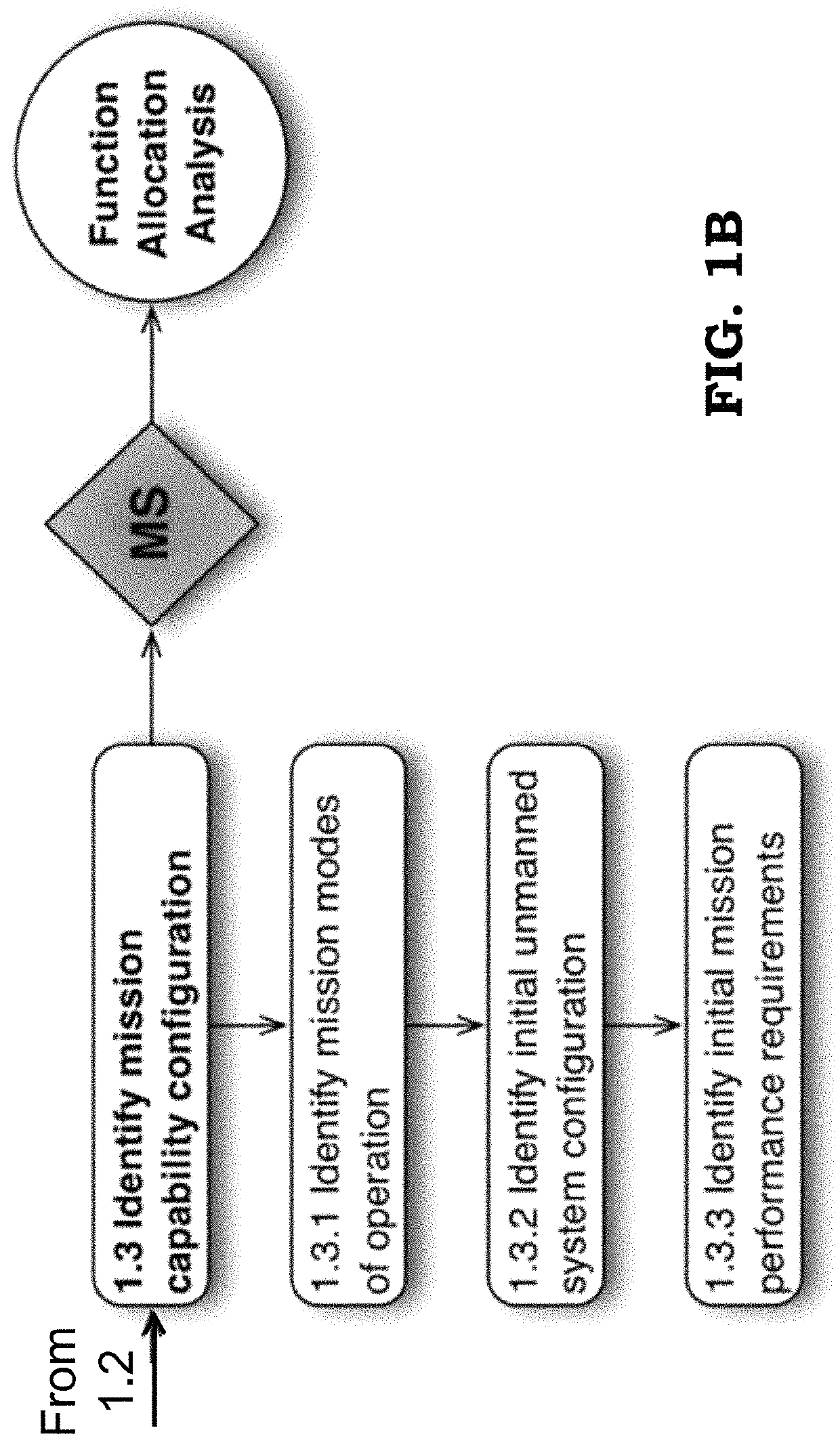Human-robot interaction function allocation analysis
a human-robot interaction and function allocation technology, applied in the field of human-robot interaction function allocation analysis, can solve the problems of compromising or jeopardizing the overall mission safety and effectiveness
- Summary
- Abstract
- Description
- Claims
- Application Information
AI Technical Summary
Benefits of technology
Problems solved by technology
Method used
Image
Examples
Embodiment Construction
[0037]Referring now to the figures, the HRI-FAA is typically embodied as a three -step process to develop and configure unmanned systems. The terms “step, “phase,” and “stage” are used synonymously herein to describe the three main sequential components of a typical inventive process. “Step One” identifies the mission-based unmanned system requirements necessary to maintain and support capability needs of both the mission and the warfighter. “Step Two” functionally decomposes the allocation of unmanned system capabilities within each mode of operation, and then conducts a comprehensive unmanned system safety analysis. “Step Three” evaluates the automation allocation of unmanned system capabilities in order to optimize HRI configurations within each mode of operation.
Step One: Mission System Analysis
[0038]The overall needs of the mission system are identified in Step One, to determine the initial goals and performance objectives. The feasibility of employment is assessed to facilitat...
PUM
 Login to View More
Login to View More Abstract
Description
Claims
Application Information
 Login to View More
Login to View More - R&D
- Intellectual Property
- Life Sciences
- Materials
- Tech Scout
- Unparalleled Data Quality
- Higher Quality Content
- 60% Fewer Hallucinations
Browse by: Latest US Patents, China's latest patents, Technical Efficacy Thesaurus, Application Domain, Technology Topic, Popular Technical Reports.
© 2025 PatSnap. All rights reserved.Legal|Privacy policy|Modern Slavery Act Transparency Statement|Sitemap|About US| Contact US: help@patsnap.com



